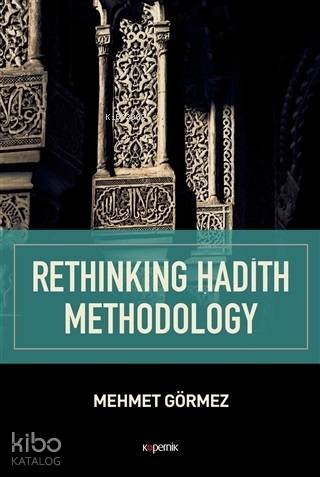9786056919589
486516

https://www.sehadetkitap.com/urun/rethinking-hadith-methodology
Rethinking Hadith Methodology
1260.00
In the early centuries of Islam, Muslim scholars developed countless scientific disciplines in attempting to classify, investigate, and utilize the ḥadīths and the sunnah of the Prophet Muhammad. As none of these sciences evolved into a fully-fledged hadīth science, scholars began to implement the methodology of fiqh in examining the ḥadīths. After Imam al-Shafi‘i in the ninth century, ḥadīths were almost exclusively confined to the realm of legal studies. This new legalistic and literalist approach to the ḥadīths created serious problems, primarily for two reasons: firstly, the Prophet did not intend that each of his words and utterances should form the basis of a legal system; and secondly, unlike the Qur'an, the Prophet's statements were transmitted over generations and not always verbatim and therefore recorded ḥadīths could not be treated as immutable legal documents.
For these reasons, the aim of this book is to demonstrate the necessity of creating a new ḥadīth science. This objective can be achieved by benefiting from both the rich Islamic scholarly tradition and contemporary semantic and hermeneutics studies.
In the early centuries of Islam, Muslim scholars developed countless scientific disciplines in attempting to classify, investigate, and utilize the ḥadīths and the sunnah of the Prophet Muhammad. As none of these sciences evolved into a fully-fledged hadīth science, scholars began to implement the methodology of fiqh in examining the ḥadīths. After Imam al-Shafi‘i in the ninth century, ḥadīths were almost exclusively confined to the realm of legal studies. This new legalistic and literalist approach to the ḥadīths created serious problems, primarily for two reasons: firstly, the Prophet did not intend that each of his words and utterances should form the basis of a legal system; and secondly, unlike the Qur'an, the Prophet's statements were transmitted over generations and not always verbatim and therefore recorded ḥadīths could not be treated as immutable legal documents.
For these reasons, the aim of this book is to demonstrate the necessity of creating a new ḥadīth science. This objective can be achieved by benefiting from both the rich Islamic scholarly tradition and contemporary semantic and hermeneutics studies.
Iyzico İle Öde
| Taksit Sayısı | Taksit tutarı | Genel Toplam |
|---|---|---|
| Tek Çekim | 1.260,00 | 1.260,00 |
| 2 | 630,00 | 1.260,00 |
| 3 | 420,00 | 1.260,00 |
| 4 | 315,00 | 1.260,00 |
Yorum yaz
Bu kitabı henüz kimse eleştirmemiş.





















